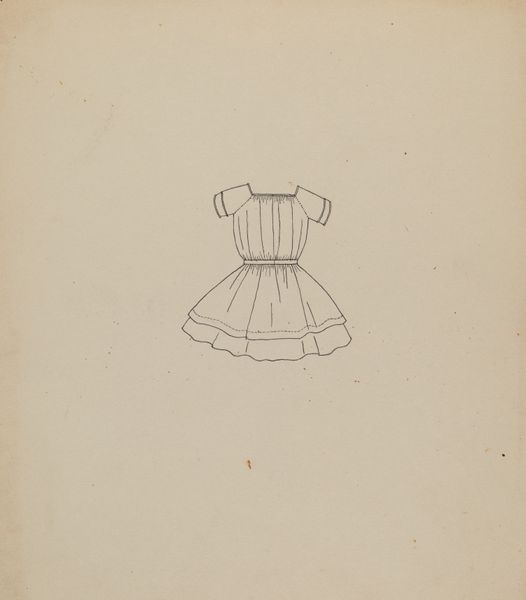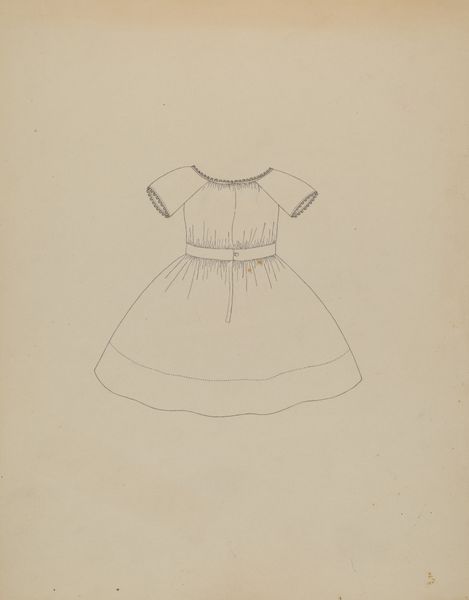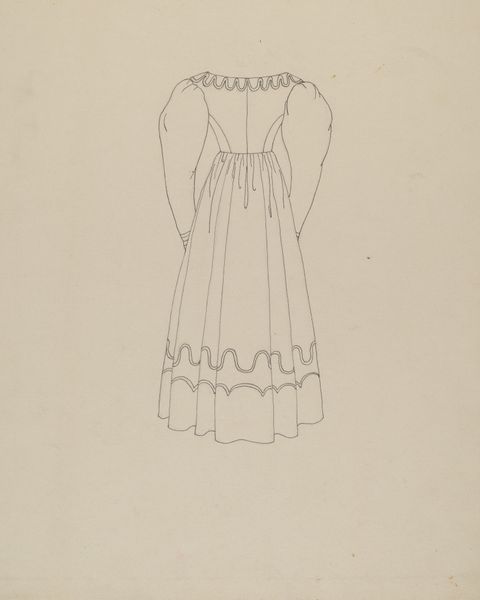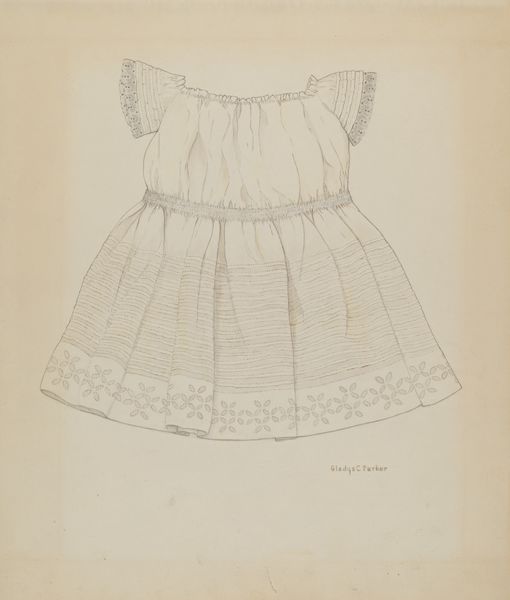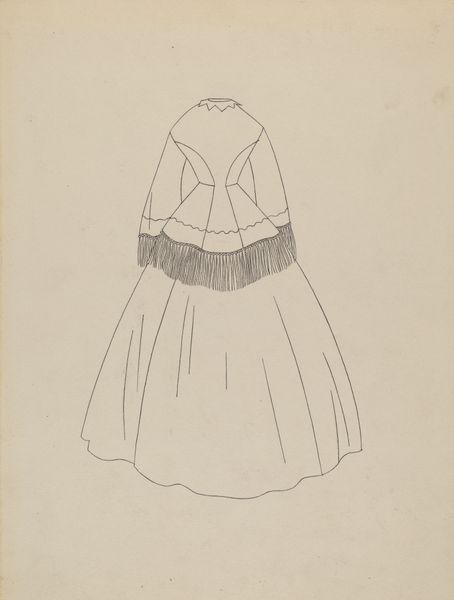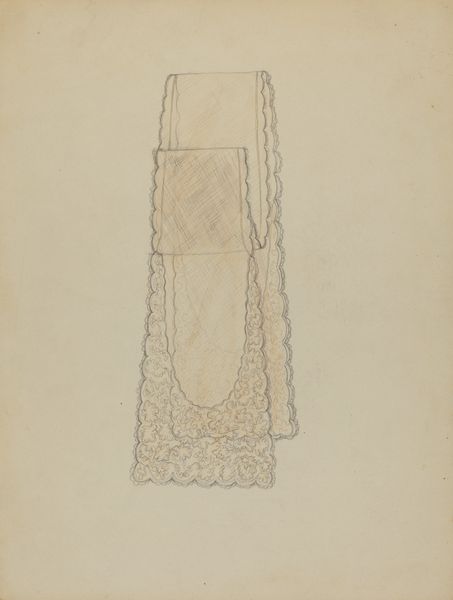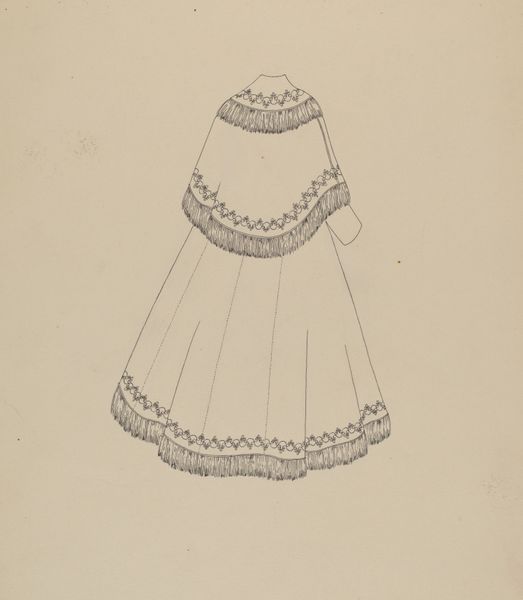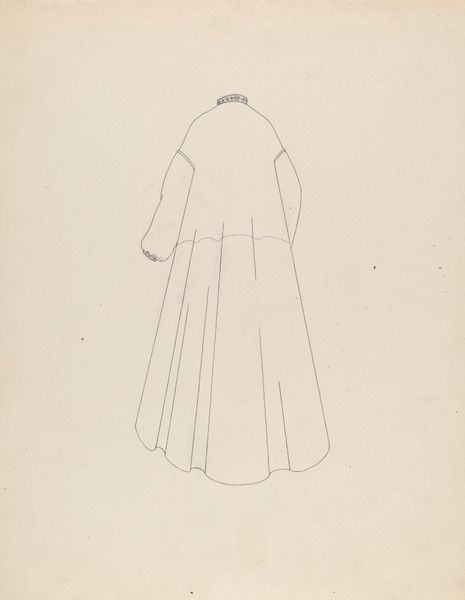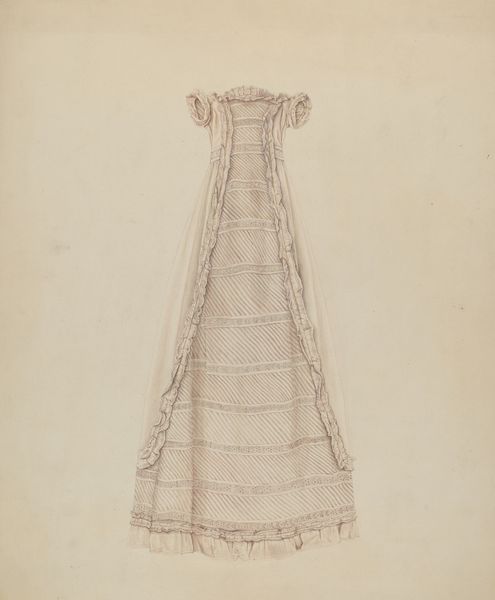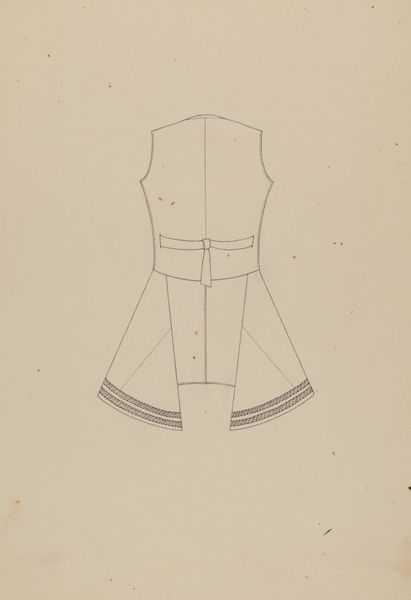
drawing, paper, pencil
#
drawing
#
paper
#
geometric
#
pencil
Dimensions: overall: 29 x 22.6 cm (11 7/16 x 8 7/8 in.)
Copyright: National Gallery of Art: CC0 1.0
Curator: What we have here is a design simply titled "Child's Dress," rendered around 1937 by Mae A. Clarke. It's a drawing executed with pencil on paper. Editor: There's an undeniable sense of tenderness emanating from this simple drawing. It appears quite fragile, both in its rendering and concept, hinting at themes of protection and innocence. Curator: Indeed. The delicacy comes through, and I think part of that effect is rooted in the economic context of its creation. A simple design like this, at that time, represented not just a garment, but an aspiration—clothing was precious, often handmade or meticulously cared for. Editor: Absolutely. If you consider the composition itself, you'll notice a balanced vertical alignment that supports the symmetrical qualities, imparting an overall sense of quiet order, almost meditative. The texture is, of course, only implied by the variations in the pencil strokes, the weight and line suggesting light and shadow. Curator: The implied geometry along the hem is particularly intriguing in the sense that, during this era, such decorations would have likely been the product of skilled needlework or perhaps a salvaged fragment of older fabric. The drawing, in this case, suggests the labour involved even to arrive at an intention to create such a thing. Editor: Speaking to its geometric trim and sparse line work, I appreciate how Clarke avoids elaborate embellishments. It underscores the aesthetic of functional elegance, reminiscent of the design principles in modernist art. Curator: It's amazing how this object offers us a window into the economic and material realities of the time. Clothing represented something different than just an item in mass consumption. Editor: It’s as much a study in minimal form and aesthetic principles as it is in its social function. Curator: Thank you for sharing this insight. Now I see the piece with new eyes. Editor: My pleasure. Art opens dialogues about aesthetics and social consciousness that are always revealing, even in so spare a work like this one.
Comments
No comments
Be the first to comment and join the conversation on the ultimate creative platform.

